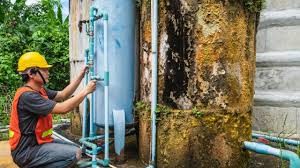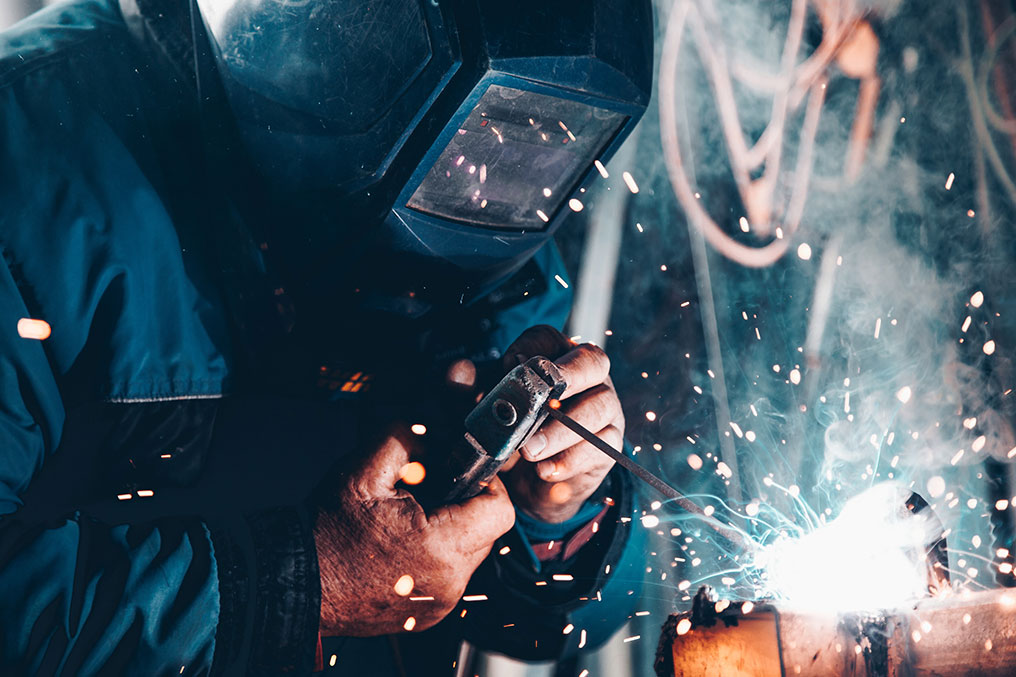Stories you may like
Technical Artist
A technical artist is a specialized role in the field of computer graphics and video game development. Technical artists bridge the gap between art and technology, combining their artistic skills with a deep understanding of the technical aspects involved in creating visual content. Their primary responsibility is to ensure that the artistic vision of a project is effectively realized within the technical limitations and requirements of the platform or software being used.
Technical artists possess a diverse skill set that typically includes knowledge of art production pipelines, 3D modeling and animation, shader creation, scripting, and proficiency with various software tools. They collaborate closely with artists, designers, and programmers to find solutions to complex technical challenges. They help optimize and streamline the art production process, ensuring that assets are efficiently created, integrated, and displayed in the final product. Technical artists also play a vital role in problem-solving and troubleshooting visual issues, such as optimizing performance, addressing compatibility issues, and maintaining artistic consistency across different platforms or devices.
A technical artist is an essential member of a development team who combines artistic and technical expertise to bridge the gap between art and technology. They contribute to the successful realization of the artistic vision in a technically sound and visually appealing manner, ensuring that the final product meets the desired quality standards and technical requirements.
Duties and Responsibilities
The duties and responsibilities of a technical artist can vary depending on the specific project and the needs of the development team. However, here are some common duties and responsibilities associated with the role of a technical artist:
- Art-Technology Integration: Technical artists are responsible for integrating artistic assets into the game engine or software platform. They work closely with artists and designers to ensure that the assets, such as 3D models, textures, and animations, are properly imported, optimized, and displayed correctly in the final product. They may need to create tools, scripts, or workflows to automate or streamline the integration process.
- Technical Problem-Solving: Technical artists troubleshoot and resolve visual issues or technical challenges that arise during the production process. This can involve identifying and addressing performance bottlenecks, optimizing shaders, resolving rendering artifacts, or ensuring compatibility across different platforms or devices. They collaborate with programmers to find efficient and effective solutions while maintaining the artistic integrity of the project.
- Pipeline Development and Optimization: Technical artists contribute to the development and improvement of art production pipelines. They identify areas where workflows can be optimized, propose and implement solutions to enhance efficiency, and establish best practices to ensure smooth collaboration between artists and programmers. They may develop custom tools, scripts, or plugins to automate repetitive tasks and improve the overall efficiency of the art production process.
- Collaboration and Communication: Technical artists act as a bridge between different departments within a development team. They collaborate closely with artists, designers, and programmers to understand their needs, provide technical guidance, and ensure effective communication between art and technology. They translate technical requirements and limitations to artists and communicate artistic requirements and vision to the technical team, fostering a collaborative and cohesive working environment.
- Research and Development: Technical artists stay updated on the latest advancements in technology, tools, and techniques relevant to their field. They conduct research, experiment with new software or workflows, and propose innovative solutions to enhance the visual quality or efficiency of the project. They may also explore emerging trends in the industry and provide recommendations for incorporating new technologies or visual effects into the project.
Real-Life Examples
Here are a few real-life examples of what technical artists do in different industries:
- Video Games: In the video game industry, technical artists play a crucial role in bridging the gap between art and technology. They work closely with artists, animators, and programmers to ensure that the visual assets and effects in games are seamlessly integrated and optimized. For example, a technical artist may develop tools and scripts to automate the process of importing 3D models and textures into the game engine, optimize character rigs for animation, create shaders for materials, or implement particle systems for special effects.
- Animation Studios: Technical artists in animation studios are responsible for implementing and optimizing the technical aspects of the animation production pipeline. They work closely with animators, modelers, and lighting artists to ensure that the animation assets are properly integrated, rendered, and delivered within the technical specifications. They may develop custom tools to streamline the animation workflow, troubleshoot technical issues related to rigging or rendering, or optimize the performance of complex animation sequences.
- Film and Visual Effects: Technical artists also play a significant role in the film and visual effects industry. They work alongside visual effects artists, compositors, and technical directors to develop and implement complex visual effects shots. For example, a technical artist may be responsible for creating and optimizing shaders for realistic rendering of digital characters or environments, developing custom tools to simulate natural phenomena like fire or water, or implementing dynamic simulations for destruction or particle effects.
- Augmented Reality (AR) and Virtual Reality (VR): Technical artists are instrumental in creating immersive experiences in AR and VR applications. They collaborate with artists, designers, and programmers to develop and optimize the visual assets and interactive elements in these virtual environments. They may work on tasks such as optimizing 3D models and textures for real-time rendering, creating shaders for realistic lighting and materials, implementing interactive UI elements, or developing tools to enhance the overall user experience in AR and VR applications.
- Advertising and Marketing: Technical artists also contribute to the creation of visually compelling content in the advertising and marketing industry. They collaborate with graphic designers, animators, and developers to create interactive and visually engaging campaigns. For instance, a technical artist may develop interactive 3D elements for websites or mobile applications, optimize assets for real-time rendering in interactive experiences, or create custom tools and scripts to automate repetitive tasks and enhance the production workflow.
How to become a Technical Artist
Becoming a technical artist involves acquiring a combination of artistic and technical skills. Here is a detailed guide on how to pursue a career as a technical artist:
- Develop artistic skills: Start by building a strong foundation in traditional art fundamentals such as drawing, composition, color theory, and anatomy. Take art classes, attend workshops, and practice regularly to hone your artistic abilities. Familiarize yourself with digital art tools and software commonly used in the industry, such as Photoshop, Maya, or Blender.
- Gain technical proficiency: Acquire a solid understanding of the technical aspects of computer graphics and visual effects. Learn 3D modeling, texturing, rigging, and animation techniques. Familiarize yourself with shader programming, scripting languages (such as Python or MEL), and other relevant software tools. Online tutorials, courses, and resources can help you develop technical skills.
- Pursue a relevant degree: While not always required, a degree in a relevant field can be beneficial. Consider pursuing a Bachelor's Degree in Computer Science, Computer Graphics, Animation, or a related discipline. These programs provide a structured curriculum that covers both artistic and technical aspects of computer graphics.
- Build a portfolio: Create a portfolio that showcases your skills and demonstrates your ability to integrate art and technology. Include examples of 3D models, animations, shaders, and any other relevant work that showcases your technical and artistic capabilities. Regularly update and refine your portfolio as you gain new skills and complete new projects.
- Gain practical experience: Look for internships, entry-level positions, or freelance opportunities to gain practical experience in the industry. Work on real-world projects and collaborate with artists, designers, and programmers to understand the production pipeline and gain exposure to industry standards and workflows.
- Network within the industry: Attend industry events, conferences, and workshops to network with professionals in the field. Join online communities, forums, and social media groups dedicated to computer graphics and technical art. Engage in conversations, seek advice, and showcase your work to build connections and learn from experienced professionals.
- Continuously learn and stay updated: The field of technical art is constantly evolving with new technologies and techniques. Stay updated with industry trends, advancements, and software updates. Engage in self-learning through online tutorials, workshops, and specialized courses to expand your skill set and stay competitive in the field.
- Seek professional organizations and resources: Join professional organizations such as the Technical Artists Group or the International Game Developers Association (IGDA) to connect with fellow technical artists, attend industry events, and access valuable resources. Explore online platforms like the Technical Artists Forum or ArtStation, which provide a wealth of information, tutorials, and opportunities for technical artists.
- Showcase adaptability and problem-solving skills: Technical artists need to be adaptable and possess problem-solving abilities. Demonstrate your ability to find creative solutions to technical challenges, troubleshoot issues, and work collaboratively with multidisciplinary teams.
- Apply for technical artist positions: Once you have built a strong portfolio and gained relevant experience, start applying for technical artist positions. Look for job openings in game development studios, animation studios, visual effects companies, and other related industries. Tailor your resume and cover letter to highlight your technical and artistic skills, along with your ability to bridge the gap between art and technology.
Skills needed for a Technical Artist
Core Technical Skills
- 3D Art & Design Tools: Proficiency with software like Maya, 3ds Max, Blender, ZBrush for modeling, rigging, and animation.
- Game Engines: Expertise in Unityand/or Unreal Engine, including material editors, blueprints, and lighting systems.
- Scripting & Programming: Knowledge of Python, C#, C++ , or MEL scripting to automate tasks and develop custom tools.
- Shaders & Materials: Ability to create optimized shaders (HLSL/GLSL/Shader Graph/Material Editor).
- Visual Effects (VFX): Experience with particle systems, simulations, and real-time effects.
- Performance Optimization: Skills in reducing draw calls, optimizing textures, LODs (Levels of Detail), and memory usage.
Artistic Skills
- Strong Artistic Sense: Understanding of composition, lighting, form, and color theory.
- Animation & Rigging: Knowledge of skeletal rigging, skin weighting, and blend shapes.
- Texturing & UV Mapping: Proficiency with Substance Painter, Photoshop, Quixel for texture creation.
- Procedural Art: Familiarity with Houdini for procedural asset generation.
Problem-Solving & Collaboration Skills
- Pipeline Development: Ability to design workflows between art and programming teams.
- Debugging & Troubleshooting: Strong problem-solving skills to resolve visual, technical, or pipeline issues.
- Cross-Disciplinary Communication: Ability to act as a bridge between artists and engineers.
- Documentation: Clear documentation of tools, workflows, and best practices for the team.
Soft Skills
- Creativity with technical problem-solving.
- Attention to detail and eye for visual quality.
- Teamwork and adaptability to different projects.
- Continuous learning to stay updated with evolving tools and industry trends.
Career Outlook of a Technical Artist
- High Demand in Gaming & Media: As video games, AR/VR, and film production continue to grow, demand for technical artists is increasing. Studios need professionals who can bridge the gap between art and technology.
- Cross-Industry Opportunities: Beyond gaming, technical artists are also hired in animation, film VFX, simulation, metaverse development, architecture visualization, and virtual production.
- Evolving Role: With real-time engines (like Unreal Engine 5) being used in more industries, technical artists are becoming essential for creating efficient, visually appealing, and interactive content.
- Career Growth: Technical Artists often progress into roles like:
Lead Technical Artist
Tools/Pipeline Developer
Technical Art Director
VFX/Shader Specialist
Real-Time Rendering Specialist
Salary of a Technical Artist
(Salaries vary by country, experience, and industry.)
United States
Entry-Level: \$50,000 – \$70,000 per year
Mid-Level: \$70,000 – \$95,000 per year
Senior/Lead: \$95,000 – \$130,000+ per year
India
Entry-Level: ₹4 – 7 LPA
Mid-Level: ₹7 – 12 LPA
Senior/Lead: ₹12 – 20+ LPA
United Kingdom
Entry-Level: £25,000 – £35,000
Mid-Level: £35,000 – £50,000
Senior/Lead: £50,000 – £70,000+
Canada & Europe
Entry-Level: CAD €40,000 – €55,000
Mid-Level: CAD €55,000 – €75,000
Senior/Lead: CAD €75,000 – €100,000+




User's Comments
No comments there.